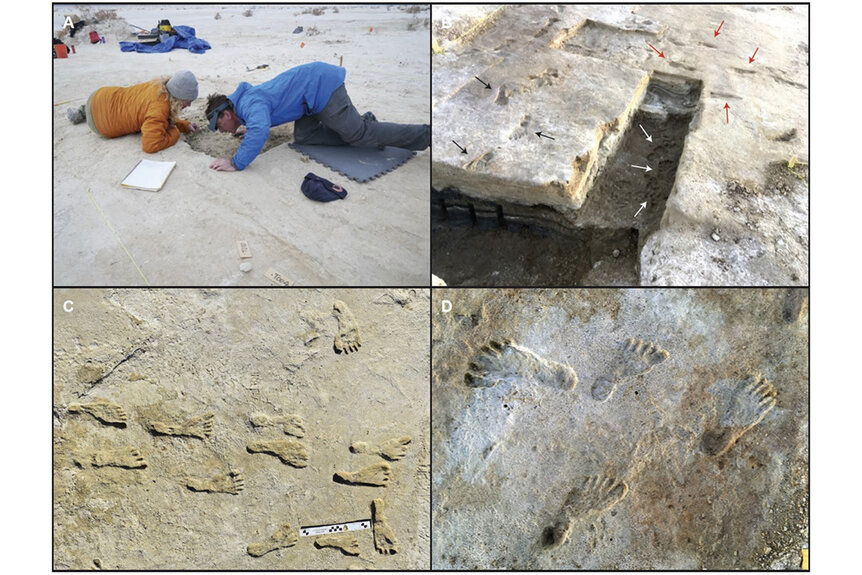Create a free profile to get unlimited access to exclusive videos, sweepstakes, and more!
Ancient Humans Left Footprints in North America 5,000 Years Earlier Than We Previously Thought
Scientists confirm ancient human footprints in New Mexico dated to between 21,000 and 23,000 years ago.

DreamWorks Animation's The Croods (streaming now on Peacock) follows the harrowing adventures of a single ancient family as they leave the cave for parts unknown. Along the way, they encounter all manner of challenges biological (attacking animals), geological (earthquakes and volcanoes), and psychological (being a parent is hard, man). In Earth’s own past, something similar must have happened as humans spread out of Africa to every corner of the planet over the course of tens of thousands of years. Now, new research confirms that humans spread across the globe even faster than we previously thought.
Ancient Footprints Reveal a Long Human Legacy in North America
Like all things in science, our understanding of events evolves as new information emerges, but the conventional timeline of human expansion goes something like this. First, humans emerged in Africa roughly 200,000 years ago, and we hung out there for a while. Then, between 90,000 and 60,000 years ago, humans began a great expansion, moving into Europe and Asia. By about 45,000 years ago, humans had settled islands like Papua New Guinea and Australia and roughly 10,000 years later were entrenched across much of Africa, Europe, Asia, and nearby islands.
RELATED: Dinosaur Pets! Ancient Humans Hatched and Raised Giant Dino-Birds
The conventional wisdom based on prior evidence is that crossing the Pacific to North America didn’t happen until between 16,000 and 13,000 years ago, right around the end of the last ice age. A set of 61 footprints in a New Mexico National Park have pushed the date of North American arrival back significantly, placing humans in the area between 21,000 and 23,000 years ago.
The footprints were found at White Sands National Park in New Mexico back in 2006 and uncovered in 2009. A study of the prints was first published in 2021 and included an estimated date of approximately 21,000 years. That number was met with understandable resistance by the wider scientific community because it’s so far removed from the common model. That resistance was both expected and welcome; nothing in science is accepted until it can be replicated and validated.
RELATED: Humanity Was Almost Wiped Out a Million Years Ago, Study Finds
Now, a separate team of researchers have conducted an independent analysis of the prints and confirmed the original dating. The results, published in the journal Science, rely in part on dating seeds found in the sediment alongside the prints. Ultimately, researchers used three different dating methods to constrain the age of the footprints, all of which agreed with the original date range of 21,000 to 23,000 years.
Interestingly, the majority of prints appear to come from teenagers and children. Researchers speculate that high level tasks may have been reserved for adults, while simpler fetch and carry tasks were left to the kids. Teenagers running errands and their smaller siblings tagging along made for a lot of footprints in a compact area, and a better understanding of our past.
Parents have been making kids do stuff they don’t want to do for eons. See it happen in The Croods, streaming now on Peacock!



























